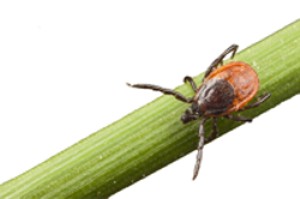Further information about borreliae
Pathogen
 Lyme disease is the most common illness transmitted by ticks in the northern hemisphere. It is caused by different species of the so-called Borrelia burgdorferi sensu lato complex. In Europe up to 35% of all ticks are infected with borreliae. Until now B. burgdorferi sensu stricto, B. garinii, B. afzelii, B. spielmanii and B. bavariensis are known to be human pathogenic. Additionally, the pathogenicity of B. valaisiana is being discussed.
Lyme disease is the most common illness transmitted by ticks in the northern hemisphere. It is caused by different species of the so-called Borrelia burgdorferi sensu lato complex. In Europe up to 35% of all ticks are infected with borreliae. Until now B. burgdorferi sensu stricto, B. garinii, B. afzelii, B. spielmanii and B. bavariensis are known to be human pathogenic. Additionally, the pathogenicity of B. valaisiana is being discussed.
After the tick bite it usually takes longer than 12 hours of attachment until borreliae are transmitted from the tick to the human host.
Symptoms
As Lyme disease is a multisystemic infection, not only the skin but also the nervous system, the joints and the heart can be affected. The disease can be categorised into three stages. Nevertheless, an atypical progression is possible.
Stage I: The most frequent early manifestation is the erythema migrans, a circular, outwardly expanding rush. It can be accompanied by flu-like symptoms like fever, head ache and swollen lymph nodes.
Stage II: The first symptoms can wear off without any consequences. Nevertheless, within several days or weeks bacteria can disseminate into the nervous system (neuroborreliosis), myocard or the joints. This can cause meningitis or facial palsy and myocarditis, respectively.
Stage III: Lyme arthritis and acrodermatitis chronica atrophicans can occur as late manifestations years after the tick bite. They are characterised by a chronic inflammation of the knee or subtalar joint and atrophies of the skin, respectively.
If an infection with borreliae is detected at an early stage, it can successfully be treated with antibiotics.
Back to FluoroType® Borrelia